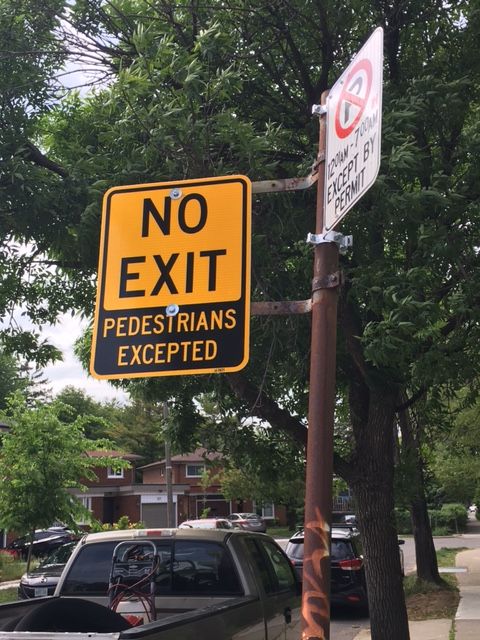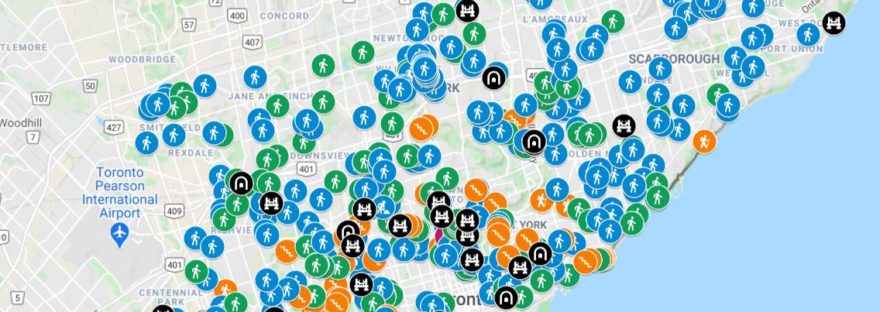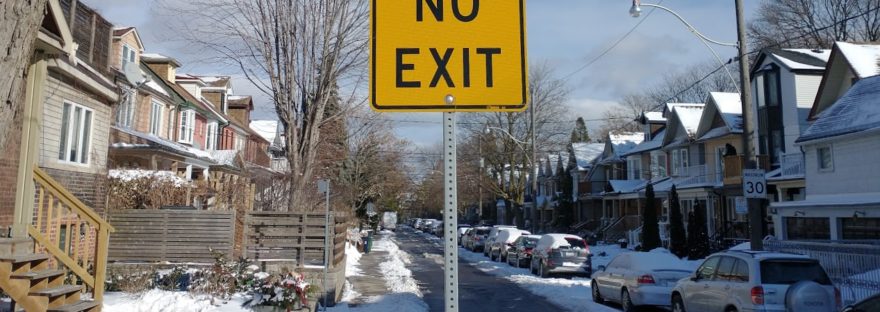New “No Exit” signs with a pendant that notes “Pedestrians Excepted” have started to be rolled out across Toronto. The new signs are the result of Walk Toronto’s campaign to get signage to recognize when there is a pedestrian exit on streets that motor vehicles can’t exit.
Walk Toronto’s campaign was anchored by a map created by steering committee member Sean Marshall, who collected feedback and did his own research to identify over 450 locations where a “No Exit” sign did not accurately reflect the fact that pedestrians (and, in some locations, cyclists) did have an exit.
The campaign was inspired by a series of tweets by @The_Terroirist, who also spotted one of the first installations of the new signs, in the east end.
First “Yes Exit” sign I’ve seen in the wild! It looks great!
Thank you, @PaulaFletcherTO, @Walk_TO, @cityoftoronto, and everybody else for helping make this happen!
At Felsted and Lamb. pic.twitter.com/1uKiuoXMnd
— Vex: the very model of a modern major gender role! (@The_Terroirist) June 4, 2021
Long-time and recently retired Walk Toronto steering committee member Judith Kidd sent in this photo from the corner of Ormskirk Ave. and Ormskirk Ct. in the west end.

Cycle Toronto’s Kevin Rupasinghe also spotted one.
It’s actually happening!! Thank you @Walk_TO & @PaulaFletcherTO! Next we just need curb cuts… h/t @MarvinMacaraig #WalkTOhttps://t.co/hyy4kCDUB1 pic.twitter.com/kQPlHbV7L4
— Kevin Rupasinghe (@RupasingheKevin) June 8, 2021
It’s exciting to see the results of our campaign becoming reality so quickly. We look forward to seeing these signs rolled out at the many locations in all parts of Toronto identified in Sean Marshall’s map.



